Norway is officially known as the Kingdon of Norway and it is a Scandinavian country in the north of Europe.
It is characterized by deep coastal fjords, mountains, and glaciers.
The two most widely spoken languages in this Nordic country are English and Norwegian.
When measured in terms of GDP per capita, Norway is considered to be the sixth richest country in the world, with a GDP per capita of approximately $69,000.
If you are a winter baby that thrives in cooler conditions, you may find that Norway is the ideal country for you.
But, before you make the consideration of moving to this Scandinavian country, you may want to consider a few advantages and disadvantages of living in Norway.
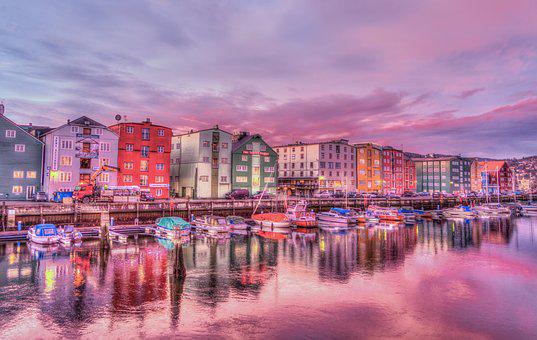
Contents
Pros of Living in Norway
1. Strong economy
Norway has one of the strongest economies in the world.
The country has offshore oilfields and gas that account for roughly 20% of the economy.
Much of the income generated from these oilfields and gas is used by the Norwegian government for public welfare.
There are several other key sectors that help strengthen the economy, including hydropower, minerals, fishery, and forests.
The sovereign wealth fund of the country is the largest in the world and it is funded through revenue generated by petroleum.
Not surprisingly, the state pension fund is currently worth $1.3 trillion and is made up of the contributions of two private sovereign wealth funds.
And, while the economy saw a slight dip in 2020, it quickly started to recover in 2021.
2. Not overcrowded
While Norway is a stunning country, you will not have to deal with too many tourists and the country itself is not overpopulated.
As of 2020, the population of Norway was 5.379 million people.
Most of the population in Norway is concentrated in one area in the south where it is slightly warmer.
The population is small in relation to the resources of the country.
So, if you are someone that enjoys space and is not crowded with people or tourists, as is the case with bigger cities like London, New York, or Hong Kong, Norway may be the ideal location for you.
3. The scenery
Many countries will claim to have beautiful scenery, and they do, but few can truly compare to the beauty of Norway.
The UNESCO-listed Fjords are what is making Norway a world-renowned travel destination.
These Fjords are glacial valleys surrounded by high mountains and waterfalls.
But it is not just the scenery and the landscapes, there are small port towns like Ålesund that are breathtakingly beautiful.
This town is scattered over a few islands and is known as a fishing town.
And, this is not the only picturesque town in this country.
There are a host of other small, quaint, and visually stunning villages and towns to visit in Norway.
The country has some of the most beautiful national parks, mountain ranges, and ice glaciers.
And, of course, you are able to see the northern lights from this side of the world.
4. Low crime
Norway has one of the lowest crime rates in the world.
The most commonly occurring crimes are robbery, theft, and burglary.
During the 2020 period, there was a total of 92,932 cases reported, varying between robbery, theft, and burglary.
These types of crimes make up roughly 31% of all crimes reported.
Traffic crimes account for 18% of all crimes in Norway, and violent crime accounts for approximately 10% of crimes reported.
In addition, over the last decade, the country has seen the crime rate decreased by nearly 80k cases.
In 2019, the number of reported crimes per 1,000 residents amounted to 58.2, which is a decrease from 2009 when the number of reported crimes per 1,000 residents was 82.8.
5. Good healthcare
Norway has universal healthcare.
The healthcare system is primarily funded by the payroll contributions of employers and employees, as well as from taxes collected.
Membership in the National Insurance Scheme(NIS) of Norway is compulsory for anyone who has been a resident of the country for more than one year.
However, within this scope, there are certain benefits and services that are afforded to citizens/residents only or those that are employed.
The insurance scheme grants members access to social security and healthcare.
The services covered in national healthcare include, primary care, hospital care, ambulatory, mental health care, and certain outpatient prescription drugs.
The aim of health insurance in Norway is to afford equal access to universal healthcare, regardless of economic or social status.
6. Great education system
The education system is funded by the government.
Public universities do not charge tuition or fees.
This applies to both citizens and foreigners who want to earn a degree in Norway.
In addition, the educational system in Norway is one of the best in the world.
You will be getting a free, high-quality education.
This is one of the major attractions for foreign students who come to Norway for exactly this reason.
And, there are a few universities that offer programs in English.
7. English is widely spoken
While Norwegian is the official language of the country, English is widely spoken everywhere.
You will have no problem fitting in or getting by in this country.
And, Norwegians learn English in school.
They are very eager to practice their English with ex-pats.
However, you may still need to master the local language as it is spoken in social settings and many of the universities offer courses in the official language of the country.
If your goal is to attend university here, you may need to learn the language first, which may take anywhere from one year to three, with total immersion.
However, as previously mentioned, there are universities that offer courses in English.
Cons of Living in Norway
1. High cost of living
The cost of living in Norway is rather high in comparison to other countries.
But, this cost will be affected by the location you choose to live in and the lifestyle you choose to adopt.
On average, you will need to earn between $2,000 and $4,500 in order to get by in this Scandinavian country.
The main factor driving up the cost of living in the Nordic countries is housing.
Rent on average is around $1,000 per month but you will need to put down a substantial deposit as well.
But apart from the housing, there is no other way around this disadvantage.
Everything in this country is expensive.
From utilities to groceries, and even entertainment.
The only offset is the cost of healthcare, education, and, in some cases, salary.
2. The weather
Most of the country has a maritime climate with mild summers and cool winters.
The influence of the Atlantic Ocean means that the climate is warmer than one would expect from the location of this country.
But, do not be fooled, the winters can get bitterly cold and run well into April.
During winter, the average temperature is often below freezing point and you will see that the whole country is covered in a blanket of snow.
The cold weather can be attributed to the fact that the sun does not come up in the north of the arctic circle, which means that this country gets very little heat during the winter.
3. Learning the language
So we did mention that this was not an absolute requirement, but it does help to familiarise yourself with the language.
The problem is that this is a challenging language to master.
It may not be as difficult as Arabic, Mandarin, or Russian, but it is, nonetheless, still challenging.
And, to better infuse into social circles, it may be a requirement.
4. Tobacco and alcohol are expensive
If you like to consume alcohol and enjoy smoking, then you may want to reconsider the move to Norway.
According to data from the European agency, Eurostat, Norway is the most expensive country in Europe when it comes to tobacco and alcohol prices.
In addition, consumer prices in Norway were 50% higher than the national average for all of Europe.
And, alcohol and tobacco products were 136% higher than the European average.
5. Property is expensive
Overall, the average price for a home or apartment in Norway is exceptionally high.
This will depend on the region where the property is located as well as the type of property.
But on average, you can expect to pay around $5,150 per square meter in Norway.
If you calculate that, the average price you can expect to pay for a 1,600-square-foot home is around $535,000.
Keep in mind that the property prices in urban areas are much more expensive than in rural areas.
The good news is that there is no property tax but there is a one-time 2.5% property transfer tax.
The most expensive properties can be found in the capital city of Oslo.
6. Eating out is expensive
Do you love dining out?
In the US, dining out is affordable for many people and there are different establishments that can cater to your budget.
Food is expensive and eating out is even more expensive.
In fact, the cost of food in Norway is 40% higher than the European average.
To mitigate the cost of eating out, try not to indulge in alcoholic beverages, as mentioned before, which can be quite pricey, and look for deals like buying one pizza and getting one free, for example.
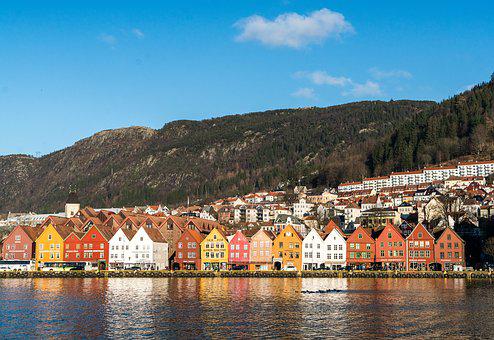
Pros and Cons of Living in Norway – Summary Table
| Pros of Living in Norway | Cons of Living in Norway |
|---|---|
| 1. Strong economy | 1. High cost of living |
| 2. Not overcrowded | 2. The weather |
| 3. The scenery | 3. Learning the language |
| 4. Low crime | 4. Tobacco and alcohol are expensive |
| 5. Good healthcare | 5. Property is expensive |
| 6. Great education system | 6. Eating out is expensive |
| 7. English is widely spoken |
Norway Safety Overview
READ THE FULL REPORT: Norway Safety Review
Safety Index:
- OVERALL RISK: LOW
- TRANSPORT & TAXIS RISK: LOW
- PICKPOCKETS RISK: MEDIUM
- NATURAL DISASTERS RISK: MEDIUM
- MUGGING RISK: MEDIUM
- TERRORISM RISK: MEDIUM
- SCAMS RISK: MEDIUM
- WOMEN TRAVELERS RISK: LOW
Frequently Asked Questions
What is the capital of Noway?
Oslo is the capital city of Norway.
It is also the largest city in Norway.
But this city was not always called Oslo.
From 1624 to 1877, Oslo was called Christiania.
The name was then changed to Kristiania from 1877 to 1925 when the name formerly became Oslo.
What is Norway famous for?
Firstly, without a doubt, Norway is famous for Norwegian salmon.
Furthermore, the famous children’s storybook writer, Roald Dahl, comes from Norway.
And, Norway has a very proud Viking heritage.
What religion is Norwegian?
Lutheran.
But there are other Christian denominations that are widespread, like Catholicism. Other communities include Buddhism and Judaism.
What is the favorite sport of Norwegians?
Soccer (football).
What are some traditional Norwegian meals?
The following are typical meals eaten in Norway:
- Lapskaus – Stew.
- Pinnekjøtt – Dried Lamb Ribs.
- Kjøttkaker – Meatballs.
- Vafler – Waffles.
- Smalahove – Sheep’s Head.
- Farikal – Mutton and Cabbage.
- Trollkrem – Lingonberry Cream.
- Brunost – Brown Cheese.
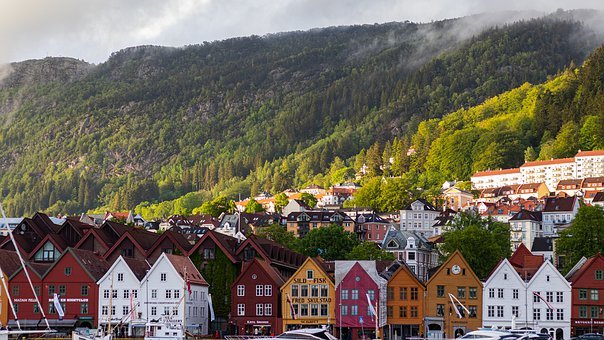
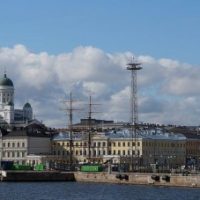
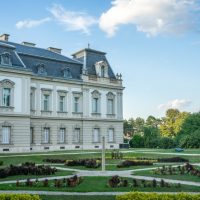
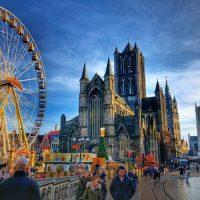

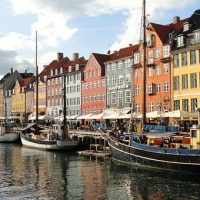
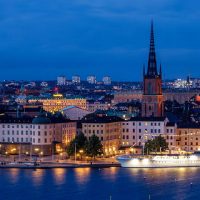





I Was Interested In Living Abroad. Checking Out Some Countries. I Love Salmon And Mild/Cool Weather.
I’m dreaming of relocating to Norway … great place per the list above
I’m dreaming the same, having been there twice and quite enjoying it I don’t think there can be anyplace better!
I love this country!
If i was only 20 again.